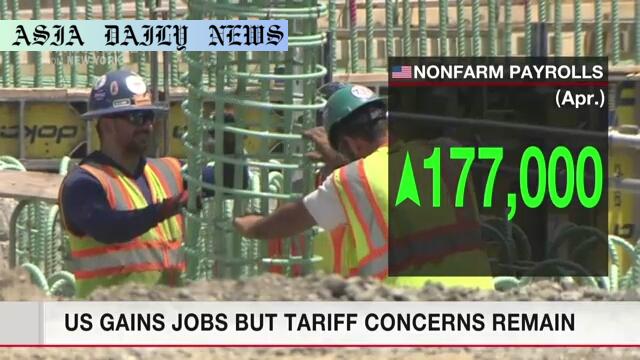job gains: Nonfarm payrolls rose by 177,000, exceeding market expectations, while the potential impact of tariffs on the economy raises concerns.
Nonfarm payrolls rose by 177,000 in April, surpassing expectations.
Unemployment rate remained steady at 4.2 percent.
Tariff policies are raising concerns over their economic impact.
President Trump calls for interest rate cuts and celebrates tariff revenues.
The Federal Reserve remains cautious, focusing on inflation.

US Economy Sees Significant Job Gains in April
The latest report from the US Labor Department reveals that nonfarm payrolls have risen by 177,000 in April, outperforming market expectations of 130,000 jobs. This data underscores the continued strength of the American labor market, marking stability in employment figures as the unemployment rate anchors at 4.2 percent. In a time of economic uncertainty stemming from trade policies, these figures bring relief to economists and policymakers alike.
President Donald Trump was quick to celebrate this achievement on social media, emphasizing the robustness of job creation under his administration. However, his focus did not rest solely on the positive developments. Trump reiterated his long-standing call for the Federal Reserve to reduce interest rates, highlighting the “billions of dollars” generated from tariffs influencing a complex economic landscape. Yet, the Federal Reserve appears hesitant, prioritizing inflation concerns and its implications above political pressures to cut rates abruptly.
Tariffs: Opportunities and Risks for the Economic Landscape
While the job gains report reflects economic steadiness, concerns loom over the broader ramifications of the current administration’s tariff policies. Economists and market analysts are warning about potential long-term effects that these tariffs could have on consumer prices and international trade relations. Inflation has consistently remained above the Federal Reserve’s benchmark target of 2 percent, prompting a cautious stance from the central bank as it weighs the inflationary ripple effects against economic momentum.
The divide between the Trump administration and the Federal Reserve is intensifying. Trump’s criticism of Fed Chair Jerome Powell showcases this rift, laying bare a difference in economic management philosophies. Whereas Trump envisions rate cuts as a growth lever, the Fed remains resolute in prioritizing a balanced and strategic approach.
Future Outlook: Balancing Growth With Stability
As the US economy continues to add jobs, the interplay between robust employment figures and evolving tariff measures will invite close scrutiny in the months ahead. The potential for tariffs to add strain to trade relations and contribute to inflationary pressures could offset gains in employment. This balance of risks and rewards will necessitate careful monitoring by economists and policymakers alike.
On the surface, April’s employment figures are a positive indicator of America’s economic trajectory. Still, they serve as a reminder of the complexities facing policymakers in navigating an environment of geopolitical tensions, inflation concerns, and political division over monetary policy decisions. With these dynamics at play, the emphasis will remain on fostering economic resilience while adapting to unfolding challenges.



Commentary
Interpreting the Strength of April’s Job Numbers
Remarkable job gains in April, with nonfarm payrolls exceeding expectations, underscore an undeniable strength in the US labor market. These numbers are a testament to the resilience of the economy, which continues to thrive despite underlying challenges. Analysts had predicted a more conservative figure of 130,000 jobs, making the reported 177,000 a delight for economic observers. Yet while these figures are reassuring, it is crucial to examine them in the larger context of policy and global pressures.
Balancing Growth With Political and Economic Complexities
President Trump’s embrace of tariffs and his public call for interest rate cuts introduces an additional layer of complexity to economic management. On the one hand, tariffs bring in significant revenue to government coffers; on the other, they hold the potential to disrupt delicate international trade relationships and drive up prices. Trump’s reliance on tariffs as a growth strategy starkly contrasts with the Federal Reserve’s cautious stance, reflecting a philosophical divide on governing the economy.
The Federal Reserve’s Role and the Path Forward
As inflation hovers above the 2 percent target, the Federal Reserve plays the pivotal role of stabilizing the economy. While Trump demands aggressive rate cuts, the Fed’s prudence underscores its independence and commitment to long-term stability. This clash, however, raises questions about how best to balance immediate economic wins with sustained growth.
The path ahead will demand difficult decisions. As job creation continues, the spotlight remains on policymakers to ensure America’s economic momentum endures without being derailed by tariffs, inflation, or broader economic risks. A nuanced and coordinated approach will be critical for sustained success.